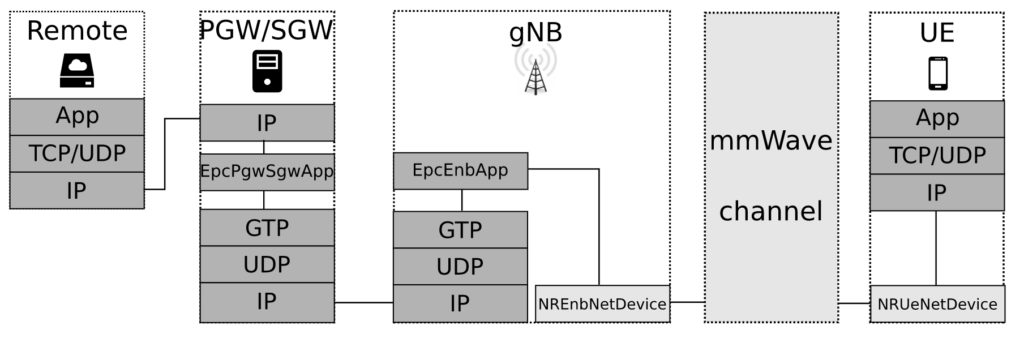ns-3 LENA/5G-LENA simulators
ns-3 modules to simulate 3GPP 4G and 5G networks
LENA and 5G-LENA are GPLv2 NR network simulators, designed as pluggable modules to ns-3. Their development is open to the community in order to foster early adoption, contributions by industrial and academic partners, collaborative development, and results reproducibility.
CTTC actively designs, develops and maintains the open-source ns-3 simulation models of leading 4G and 5G 3GPP technologies, LTE and NR, also known as LENA and 5G-LENA modules. Most of the current version of LENA was developed between 2011 and 2013 as part of an industrial project funded by Ubiquisys Ltd. (now part of Cisco). The work around the NR protocol stack was initiated in 2017 in the framework of a collaboration with Interdigital. The simulators have received funding from different companies and governmental agencies like the WiFi Alliance, Spidercloud Wireless, National Institute of Standards and Technologies (NIST), Lawrence Livermore National Lab (LLNL), Huawei Technologies, and Meta. Branches for LAA/LTE-U (licensed assisted access and unlicensed LTE), D2D (device-to-device), NR V2X (NR vehicular to everything), and NR-U (unlicensed NR), are also available.

LENA and 5G-LENA combine a simulated channel and physical layer model with a full stack implementation of the LTE/NR RAN and EPC protocol stack that closely follows 3GPP specifications. The modules have been developed at CTTC in close collaboration with the industry. The simulators offer full protocol stack and end-to-end implementations and are characterized by high fidelity implementations of the standard, especially from MAC to APP, and by a PHY layer abstraction model.
The openness and multi-RAT characteristic of ns-3, which is inherited by LENA and 5G-LENA, make them suitable for studies where high-fidelity simulations are required for scalable scenarios where multiple technologies (e.g., 3GPP/IEEE) coexist, or where reproducible results are needed. Also, LENA and 5G-LENA inherit some ns-3 unique features at higher layers, like real-time emulation mode, which allows code reuse on testbeds or real networks, and a capability to compile the source code of real applications and the Linux network kernel for direct use in the simulations. This capability dramatically reduces the gap between simulations and prototyping, allowing for code reuse in the area of research, where products are not yet in the market.
LENA and 5G-LENA are already by one measure (academic citations) the leading packet simulation tools for 3GPP oriented network simulations. For example, Google scholar counts over 11000 publication counts to ns-3 LTE; while other LTE simulators have significantly fewer counts. The access to the 5G LENA NR models is handled directly by the CTTC and has already been granted to over 1000+ people and 300+ institutions around the world, in industry, academia and governmental agencies.
CTTC has high expertise in this software, being members of the executive board of ns-3 consortium and key designers, developers and maintainers of the LENA and 5G-LENA modules. We have given ns-3 training sessions to companies as well as open courses to the research community around the world, like for example in the framework of the Workshop on ns-3. Also, the derived design, analysis and simulations have allowed the generation of IPR in the context of industrial collaborations.
